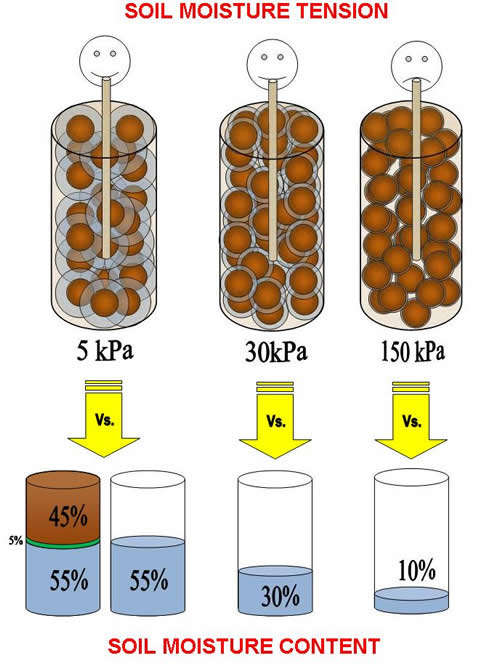Soil Moisture Tension

Soil moisture tension tells you how easy it is to extract water from soil. When a soil is saturated, there is plenty of water in the pore spaces and plenty of water coating the soil particles. All this moisture makes it very easy for plant roots to get water and the soil moisture tension is low.
Imagine sucking on an ice slushy - when you first start slurping, it's easy to get a drink. The more you drink the harder it is to get liquid from the ice and the harder you have to suck - it's the same for the plant root, as water in the pores decreases, the suction or tension that the roots need to apply to get moisture increases.
When soil tension reaches a certain threshold, the plant can no longer extract water from the soil even if there is water present, it is stuck to the soil particles and they won't let it go. This water is unavailable to the roots. At this point the plant will become stressed, begin to wilt and will eventually die if water is not replenished.
Soil Moisture Content
Soil moisture content tells you how much water is in the soil - usually as a percentage - representing what percentage of total 'volume' of soil is moisture.
Imagine a cubic metre of topsoil. Pull out all the soil particles and compact them to remove all gaps between them (suppose it squashes down to about 40% of the original volume). Do the same for the organic matter - this would occupy about 5% of the volume. What is left? The rest of the volume is made up of pore spaces which can be occupied by either air or water.
So, in a totally saturated sample of this soil, the water component would be 55% of the original cubic meter - the rest is the soil.
Given that the soil holds onto a layer of water that is inaccessible to plants, the value of "dry" soil when roots can not get any more moisture and plants become stressed, wilt and die will not be 0% but something slightly more.